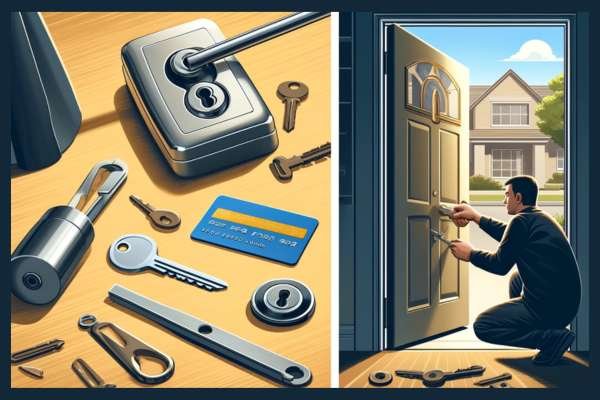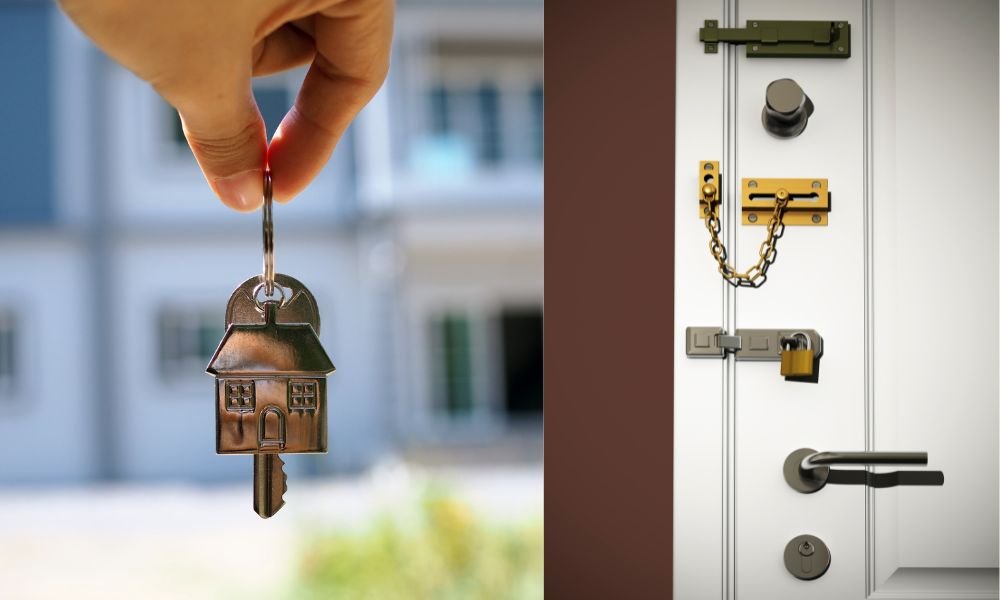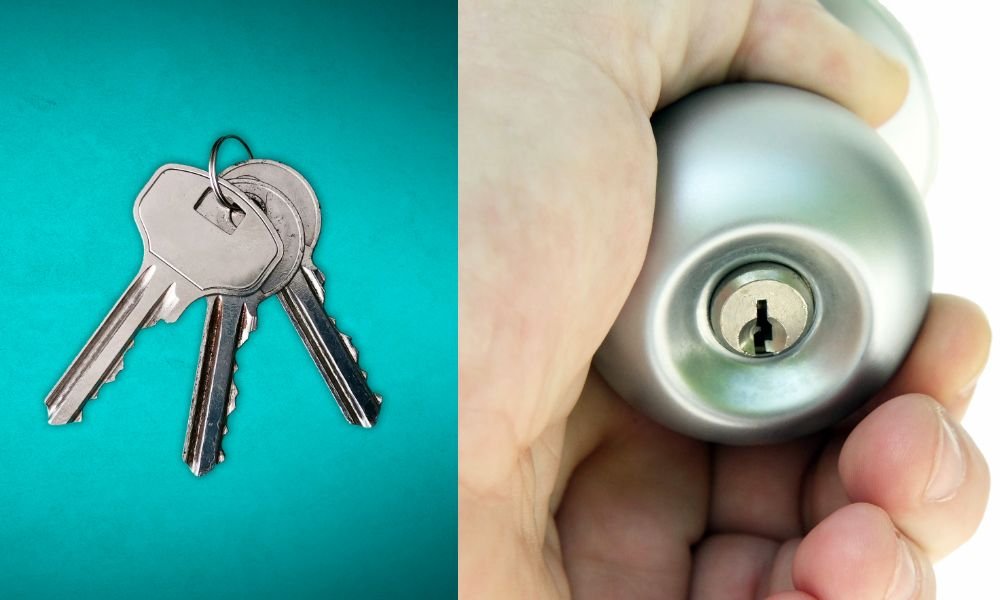Picking a door knob lock might seem like a spy movie skill, but it’s practical for real-life situations. Whether you’ve locked yourself out or misplaced your keys, knowing how to unlock a door knob can be very useful. With the right tools and some patience, you’ll be able to open the door and resolve the situation efficiently. Remember, only use this skill for legal and ethical purposes, such as accessing your own property or with the owner’s permission. Understanding this technique can save you time and stress in emergency situations. This guide will take you through the process step-by-step of how to pick a door knob lock? ensuring you can approach the task with confidence.
Understanding the Basics

Before diving into the techniques, it’s essential to understand the basic mechanism of a door knob lock. Typically, these locks function with a cylinder and pin system. Inside the lock, pins of varying lengths must align correctly with the key’s ridges to allow the cylinder to turn and unlock the door.
Tools are Needed to Pick
To pick a door lock, you’ll need some specific tools. The most common ones include:
- Tension Wrench: Used to apply tension to the lock’s cylinder.
- Pick: Used to manipulate the pins inside the lock.
These tools are often found in lock picking kits available online or at hardware stores. However, in a pinch, you can use improvised tools like paperclips or bobby pins.
Step-by-Step Guides
A. Insert the Tension Wrench
Insert the tension wrench into the bottom part of the keyhole. Apply slight pressure in the direction you would turn the key to unlock the door. Maintaining consistent tension throughout the process is crucial for success. Without the right tension, the pins won’t set properly, making it difficult to pick the lock.
B. Insert the Pick
With the tension wrench in place, insert the pick into the top of the keyhole. Feel for the pins inside the lock by gently probing with the pick. It’s important to have a steady hand and take your time to locate each pin accurately.
C. Locate the Pins
Gently lift the pick to locate each pin inside the lock. Most door knob locks have five pins, though this number can vary. Carefully identify all the pins, as missing even one can prevent the lock from opening.
D. Manipulate the Pins
Starting from the back, use the pick to lift each pin until it reaches the shear line, allowing the lock cylinder to turn. You’ll feel a slight click when a pin sets correctly. Move to the next pin and repeat the process for each pin in the latch. Consistent tension is vital here.
E. Turn the Cylinder
Once all the pins are set, turn the tension wrench in the direction you would use to open the lock. The cylinder should turn smoothly if all pins are properly set. If it doesn’t, reassess each pin’s position and try again. The latch should open, granting you access to the door.
Tips for Successful Lock Picking
A. Patience is Key
For this task requires a delicate touch and patience. Rushing can lead to mistakes that make the process more difficult. Take your time to feel for each pin and set them correctly. A slow, methodical approach will yield better results.
B. Consistent Pressure
Apply steady pressure with the tension wrench. Too much force can make it difficult to set the pins, while too little pressure won’t hold them in place. Finding the right balance is crucial for success. Keep your hand steady and maintain consistent tension throughout the process.
C. Practice Makes Perfect
The more you practice, the more proficient you’ll become. Consider practicing on locks that are not in use to hone your skills. With regular practice, you’ll develop a better feel for the pins and the right amount of tension needed. Over time, your lock-picking abilities will improve significantly.
Legal and Ethical Considerations
It’s important to note that picking a latch without permission is both illegal and unethical. Unauthorized picking can lead to legal consequences and is a violation of privacy and property rights. Only use this skill for legal purposes, such as gaining access to your own property or with the explicit permission of the lock’s owner. Always ensure that you have a legitimate reason and proper authorization before attempting to pick any latch. Understanding the legal and ethical boundaries of lock picking is crucial to avoid any potential trouble.
Common Mistakes and Troubleshooting
A. Applying Too Much Tension
One of the most common mistakes is applying too much tension with the wrench. This can make it difficult to set the pins properly. If you find the pins are not moving smoothly, reduce the pressure. Using a lighter touch can make a significant difference in your success.
B. Inserting the Pick Too Deep
Another frequent issue is inserting the pick too deep into the keyhole. This can prevent you from accurately feeling the pins and setting them correctly. Ensure the pick is positioned correctly and adjust as needed. A shallower insertion often allows for better control and precision.
C. Not Feeling for the Click
When setting the pins, it’s crucial to feel for the slight click that indicates a pin has reached the shear line. If you miss this click, you may need to start the process over. Paying close attention to these subtle cues is essential for successful picking.
Alternatives to Picking a Lock

If you find that picking the lock is too challenging or you’re concerned about potential damage, there are alternative methods to consider:
A. Using a Bump Key
A bump key is a specially cut key designed to unlock most pin tumbler locks. It works by bumping the pins into place when tapped with a hammer or similar tool. This method requires a bit of practice but can be effective for many standard locks.
B. Calling a Locksmith
Professional locksmiths have the skills and tools to handle lockouts efficiently and without causing damage. If you’re unable to unlock the door or prefer not to attempt it yourself, calling a locksmith is a reliable option. They can quickly and safely provide access to your property.
C. Using a Credit Card
For spring latch locks, a flexible card, such as an old credit card, can sometimes be used to slide the latch back. This method works best on locks that do not have a deadbolt. By inserting the card between the door and the frame, you can push the latch back and open the door. This method is quick and non-destructive for certain types of locks.
Conclusion
Learning how to pick a door knob lock can be a valuable skill in emergency situations. With the right tools and a bit of practice, you can master this technique. Always remember to use your lock-picking skills responsibly and legally. Whether you’re dealing with a lockout or simply curious about the mechanics of locks, this guide provides a solid foundation to get you started. By understanding the principles behind lock picking and practicing ethically, you can ensure you’re prepared for those unexpected moments without causing harm or breaking the law.



